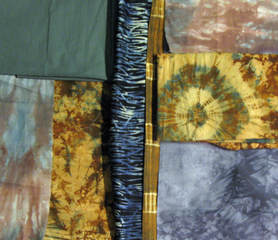 It's very easy to forget the simple pleasure of just making. I am allowing myself some simple time off, to just create a simple piece for the love of stitching. I was lucky to have some lovely kola nut and indigo fabrics from The African Fabric Shop, a beautiful piece of Jo Lovelock hand dyed fabric plus the usual bits from the stash! I have downloaded a simple irregular grid to the finished size I want so that the process of working out the sizes of each element has been done for me, good old EQ7! Looking at how this grid would need to be assembled I have made up small units which can then be fitted together. I have some Jo Lovelock hand dyed threads too and plan to use them to add some hand stitching once I have quilted the panel.
0 Comments
I have long been fascinated by the accuracy and minute piecing that so many Japanese quilters achieve. It was therefore really interesting to get up close to a collection of amazing pieces created by The impact created by this quilt was huge. It shone off the wall and created such a strong abstract image to marvel over. Close up what struck me was the really small size of each of the pieced elements and the relative weight of the fabric used. It looked like it was constructed from a fairly coarse linen. From a distance this quilt seems completely three dimensional! What was also amazing was the different sizes of the pieces which could only have been formulated on graph paper or its CAD equivalent. Now, I admire the design and workmanship, but I do not aspire to imitate! I recognise my own lack of skill and patience. Close up details.
The sheer scale of her ambition and dedication was apparent in the amazing collection of stitched line studies that comprised Nancy Crow's exhibit. Her book opens your eyes to the degree of single minded focus that enabled this collection to be completed.
On close inspection it is the quilting which brings these pieces to life, and yet this stitching has not been done by the artist herself, but at her direction by another. Beth Schillig. Interesting, absorbing but slightly cold array of art which did not engage my soul only my curiosity! The more often I visit this event the more I realise it is the Gallery exhibits which persuade me to brave the crowds, not the competition quilts.
In part this is because I don't find the competition rules or the judges criteria very helpful for my work. I find it strange that an Art Quilt is judged against the same criteria as a traditional one!! That said, it is an amazing collective exhibit of textiles work. Interesting that many of the gallery exhibits do not conform to the tight quilting competition rules, they are often art pieces with their own rationale. It is these pieces I really enjoy. The other draw is access to some of the best textile materials you can find, all under one roof! These are the exhibits I particularly took an interest in: Contemporary Quilters West's gallery "Unfolding Stories" was of particular interest, involving textiles artists I have seen previously and who are engaged in breaking boundaries if it meets their needs. SAQA "Concrete and Grassland" was inventive and fascinating. I really enjoyed studying these pieces and as a result am contemplating joining them. Nancy Crow - As a fan of her work for many many years, especially when she was creating fabulous compositions from what looked like strips of fabric. Her book "Improvisational Quilts" in 1996 made a difference to my approach to stitching and I have always taken an interest in what she has been doing. More of this later. Shizuko Kuroha's gallery garnered a great deal of interest in her limited pallette eye popping pieces. Each meticulously pieced. More of this later. The Creative Textile Studio always feeds my imagination and encourages me to remember to experiment when a technique seemd ready to fail what I want of it! I have been using my sketchbook to collate ideas from which to create some work on the is theme.
Spending time outside in a number of gardens recently I have been noticing the colour schemes which seem to pop. It's these combinations which I really enjoy including in my own work. Purples and green pop but the blue and green calm things. Yellow, green and purple with a touch of silver seem just right. I'm trying to start a library of combinations that work and which I feel exited by. I saw pink combinations with greens and with with blues which, although pretty in the garden do nothing for me and my work!
It is the overwhelming impact of colour that remains with me when I recall our trip to India earlier this year. The brightness of the light and the blend of buildings and clothing create a warmth. To start with with I am going to play with some collages of imagery from Delhi and Jaipur where I was so struck by colour everywhere! Images on paper torn up to create rough sections which I have then played around with to get a feel for what they look like. Delhi and Jaipur have provided these lovely snapshots of the vibrant colours and shapes. Text is too central in this piece. Not at all sure that the animals work in a piece like this.
Mounted onto a painted box frame this first foray into paper lamination and a Sense of Place has taught me a great deal and I am now looking forward to further exploration based on our recent trip to India.
I will explore this through the blog and on my India pages. Its fine to learn from trial pieces but necessary to remember the points when starting the full piece! I have now starting working on my Sri Lanka reflection. Using an old linen family sheet, dyed and torn I then set about choosing my images and tearing them into the sections I wanted to use. I didn't remember to use a less heavy weight paper as I got the bit between my teeth when I couldn't just lay my hands on better paper!! Auditioning the image slivers was the most important part of this piece to try to create a balance and to make the piece look less like a collection of torn pictures! It took several attempts before I got something of the effect I wanted to create. I liked adding some elements of a map and my own text written at the time of the visit. I also decided to add a drawing of the stilt fisherman and some Sinhalese script. Heavily quilted in wavy vertical lines, there are now hundreds of ends to sew back in! Having discovered Matt Medium as a means of fabric lamination, all be it with tissue paper so far, I wanted to try using photocopied images laminated to fabric before stitching into the surface. The paper laminated successfully. Selecting images and tearing them to get the exact element of the picture and layering them. With the elements laminated I felt that I wanted to include some text about the subject. I had written a piece of text some time before so went back to this and printed it off. I then added it to the edge of the piece. The text was then laminated, although I might not have chosen to have it at the margin of the piece if I has thought of this at the start! Three important lessons learned..... Try not to get too much Matt Medium on the fabric where the image will not be; print the images on to lighter weight copy paper and where possible remove bits of any image which will be covered by the next addition to prevent the build up of multiple layers of paper which then have to be stitched through.
|
Details
AuthorSarah Showers Archives
September 2018
Categories |






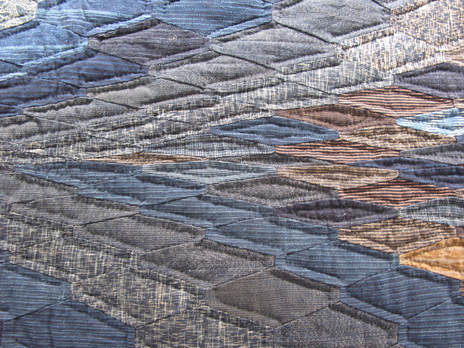


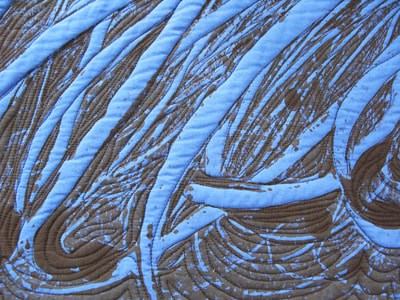

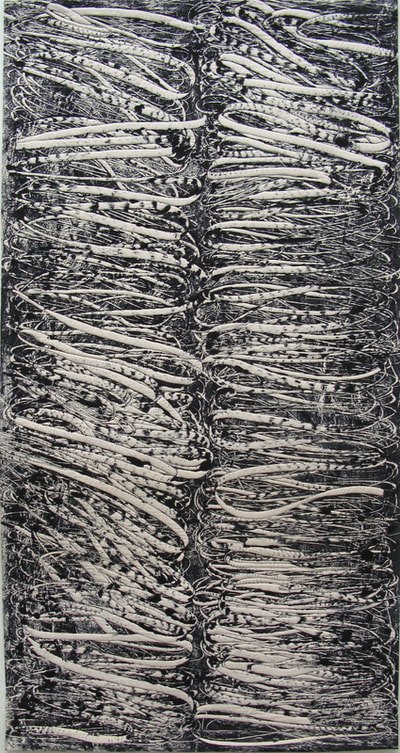
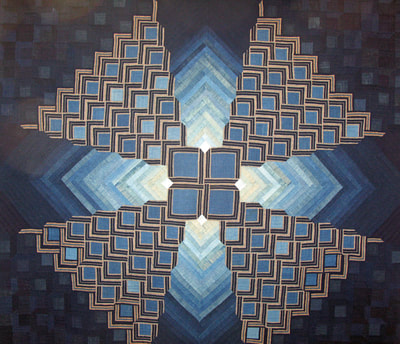








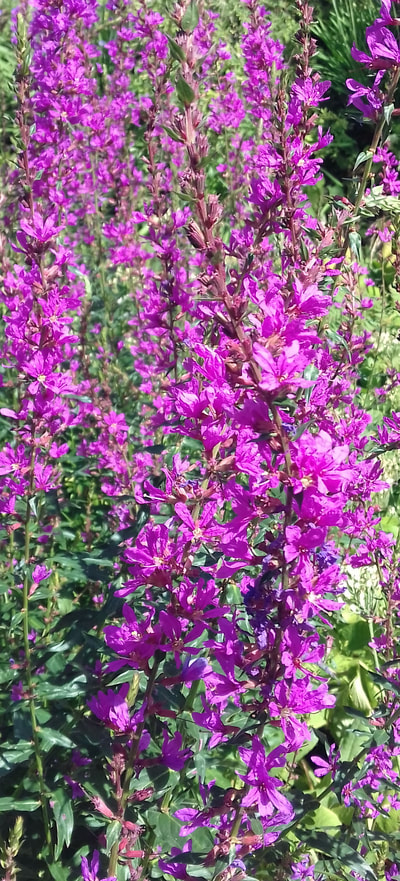




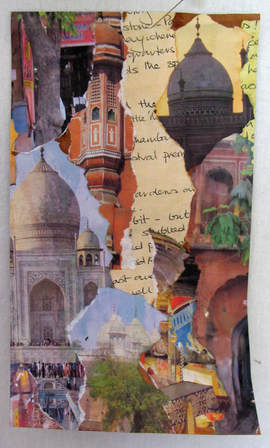


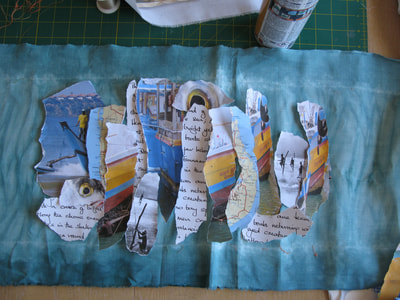
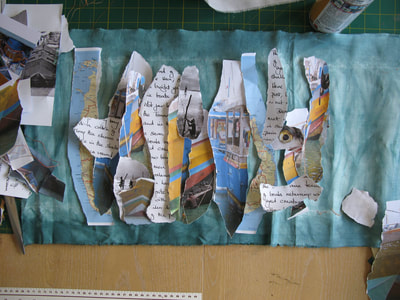





 RSS Feed
RSS Feed